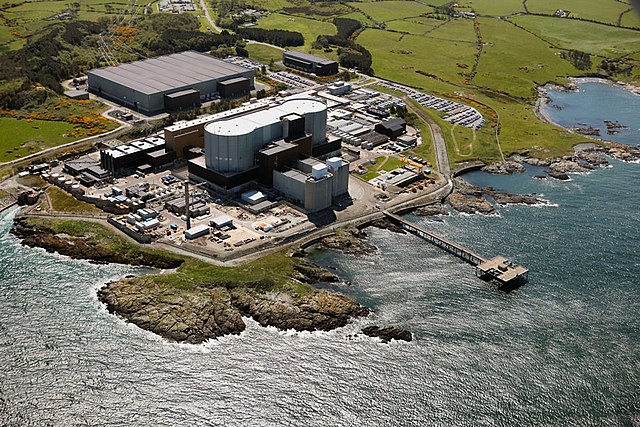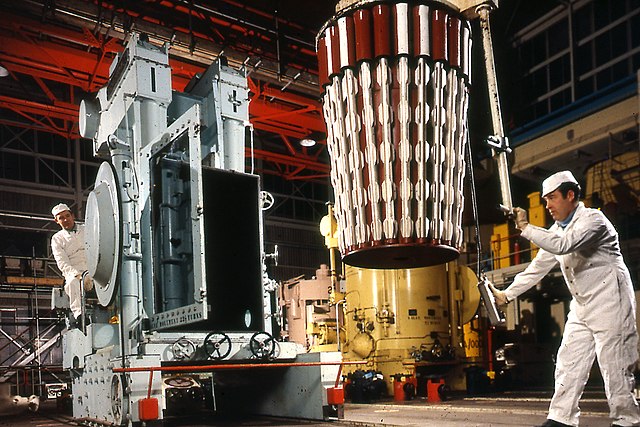Wylfa nuclear power station
Wylfa nuclear power station is a Magnox nuclear power station undergoing decommissioning. Wylfa is situated west of Cemaes Bay on the island of Anglesey, off the northwestern coast of Wales. Construction of the two 490 MW nuclear reactors, known as Reactor 1 and Reactor 2, began in 1963. They became operational in 1971. Wylfa was located on the coast because seawater was used as a coolant.
Wylfa nuclear power station
Aerial view of Wylfa just after closure
Wylfa nuclear power station from Llanbadrig Point
Area Dosemeter close to Wylfa Nuclear Power Station
Magnox is a type of nuclear power / production reactor that was designed to run on natural uranium with graphite as the moderator and carbon dioxide gas as the heat exchange coolant. It belongs to the wider class of gas-cooled reactors. The name comes from the magnesium-aluminium alloy, used to clad the fuel rods inside the reactor. Like most other "Generation I nuclear reactors", the Magnox was designed with the dual purpose of producing electrical power and plutonium-239 for the nascent nuclear weapons programme in Britain. The name refers specifically to the United Kingdom design but is sometimes used generically to refer to any similar reactor.
An early design Magnox fuel rod
Calder Hall, United Kingdom – The world's first commercial nuclear power station. First connected to the national power grid on 27 August 1956 and officially opened by Queen Elizabeth II on 17 October 1956.
Loading Magnox fuel at Calder Hall nuclear power station
The reactor buildings of Bradwell Magnox nuclear power station








